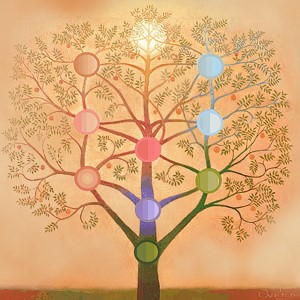WHY THE EMOR PROJECT
The Emor Project is committed to sharing Torat Hayim (A Torah of Life) as a source of guidance for life.
In today’s world, so many Jewish resources and initiatives are available. However, it can often be difficult to find the information one seeks, especially when it comes to confronting the challenges of modern Jewish life.
Emor aims to be the “index” for these resources. We organize them so that anyone, no matter their background or prior knowledge, can understand and access them.
Our overarching goal is to broaden and deepen the Jewish people’s benefit from these precious resources.
ON THREE THINGS THE WORLD STANDS
על שלושה דברים העולם עומד
The Mishna states:
“The world stands on three things: Torah, Avoda, and Gemilut Chasadim” (Avot 1:2).
These “Foundation Pillars” constitute our framework for organizing and disseminating
the Jewish people’s wealth of information and initiatives.
TORAH
THE EMOR MAPPING PROJECT
“A place for everything, and everything in its place.”
Just like an organized home allows family members to find belongings quickly and spend their time interacting with each other, our goal at Emor is to organize the profusion of Jewish resources for a similar purpose: so you can find relevant and authoritative information quickly and cooperate with other Jews in your own community and around the world.
The Emor Chart maps material about halakha (Jewish law) and hashkafa (Jewish thought) on contemporary issues. It provides a structural framework to help beginners get up to speed, as wall as providing scholars and rabbis with access to a wealth of articles, audio recordings, and videos they want and need to consider for lessons, talks or personal learning.
The Emor portal focuses on connection – connecting you to existing resources and to other Jews. You’ll even find a catalog of relevant Jewish websites, so you’ll know where to go for reliable and in-depth information.
Emor envisions a “global Beit Midrash” (study hall) in which Jews in Israel can seek input from a rabbi in Montreal, a British scholar can read and respond to ideas of a rabbi in Buenos Aires, and Jews in Los Angeles will eagerly await a response from a rabbi in Johannesburg.
Join a worldwide community in studying and shaping the process of Torat Hayim.

AVODA
Connecting with The Creator
Torah is more than just a set of guidelines for living an ethical life. It also enables us to build a relationship with the Giver of the Torah. When we perform mitzvot and study Torah, we ideally focus not only on the technical aspects of observance or intellectual study, but also on the opportunity we are given for an active, conscious connection with the Creator.
In the Avoda area, you will find life-changing teachings focused on fostering this priceless bond and understanding philosophical, spiritual, and existential questions. Emor translates these classic sources for you and explains their esoteric shorthand in an accessible way.
Our unique Emor unfolding diagram will allow you to slide effortlessly from a bird’s-eye view of a topic to a granular understanding. As you grow to recognize and cultivate God’s presence, these teachings will promote your inner peace, deepen your prayers, and expand your consciousness.

GEMILUT CHASADIM
Many of us want to engage in Tikkun Olam – improving the world – but how to do that can be difficult to figure out.
Finding your own unique way to reach out to others is easier when you understand what the needs are and you feel confident that your contributions are being used effectively and transparently.
Since Gemilut Chasadim (acts of kindness and generosity) is integral to Torat Hayim, Emor will devote an area of the portal to connect you to existing Chesed initiatives. Each month, you will learn about people who find themselves in a different type of serious difficulty, and you will find a thoroughly researched list of the most reliable organizations that address these issues.
You won’t need to reinvent the wheel. Instead, use Emor as a trusted shortcut to learn how to get involved productively.

What is Torat Hayim?

Torat Hayim literally means “Torah of Life.” The Jewish people received the Written and Oral Torah thousands of years ago, and the principles inherent in both are still vital and relevant today. But since life today is so different than it was when the Torah was given, applying these principles to our contemporary society generates lively discussion and debate. As the Torah continues to be successfully applied to our times, it remains alive and available for all those who wish to partake in its wisdom.
The Torah is described as “a living tree for those who grasp it (Proverbs 3:18).” Rabbi Prof. Daniel Sperber eloquently describes the idea of Torat Hayim through the following analogy:
It has its roots in our classical text resources…and a trunk which is the basic pillar of the law… but then it branches out in a multitude of different directions in order to deal with a multitude of different situations. And the branches turn into twigs, and the twigs perhaps grow leaves, and then, as it is now in the beginning of the fall, the leaves fall off. And then new leaves grow. And the new leaves may have a slightly different shape. And they may have a slightly different color, but they have the same genus. They are new, and they are alive, and they are vibrant.”
At Emor, we aim to illustrate the beauty of this process. We show the diverse approaches that rabbinic authorities and thinkers have adopted in dealing with contemporary halakhic challenges.
Why the Name "Emor?"

“וידבר ה’ אל משה לאמר, דבר אל בני ישראל ואמרת אליהם…”
“The Lord [Hashem] spoke [vaydaber] to Moshe saying [lemor]: Speak [daber] to the people of Israel and say [ve’amarta] to them…”
In these phrases, which appear frequently throughout the Torah, the words lemor and ve’amarta appear to be superfluous. Why couldn’t the Torah just state that Hashem (God) told Moses to speak to the children of Israel? Rabbi Samson Raphael Hirsch explains in his commentary on Leviticus 21:1 that dibur (i.e., the words vaydaber and daber) and amira (i.e., the words lemor and ve’amarta) represent two different types of speaking. Dibur refers to expressing a basic thought or concept, while amira means to fully explain an idea in a way that another person will understand. Dibur can be done in a vacuum where no one else hears, but amira demands a listener. In the Torah – and in this portal – Emor aims to teach or convey an idea to another person with enough detail and explanation for them to understand.
Based on this, there are two steps in transmitting Hashem’s mitzvot to the Jewish people. Dibur is the actual command as given by God in its pure form, while amira, or emor, is the manner in which the mitzva is transmitted from the divine and explained to humans (which Rabbi Hirsch understands to correspond to the Oral Torah). We humans cannot simply accept and follow a command from Hashem; we need to understand it and apply it to our lives in an appropriate way. This is a task that only a human teacher, like Moses, can do: to take the dibur and transform it into an amira. It thus remains faithful to the original teaching and is also transmitted and applied in an understandable way.
The amira/emor component allows humans a limited amount of leeway in interpreting the Torah and determining how it should be properly observed. This was the job of the Sages many years ago, and continues to be the job of the rabbis of every generation: to maintain the dibur as an authentic instruction from Hashem and to turn it into an amira that is at once relevant to the times while remaining faithful to the original.



